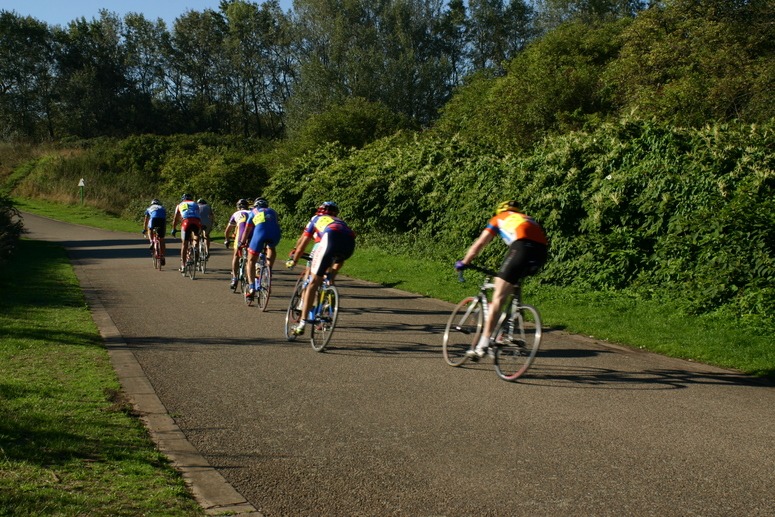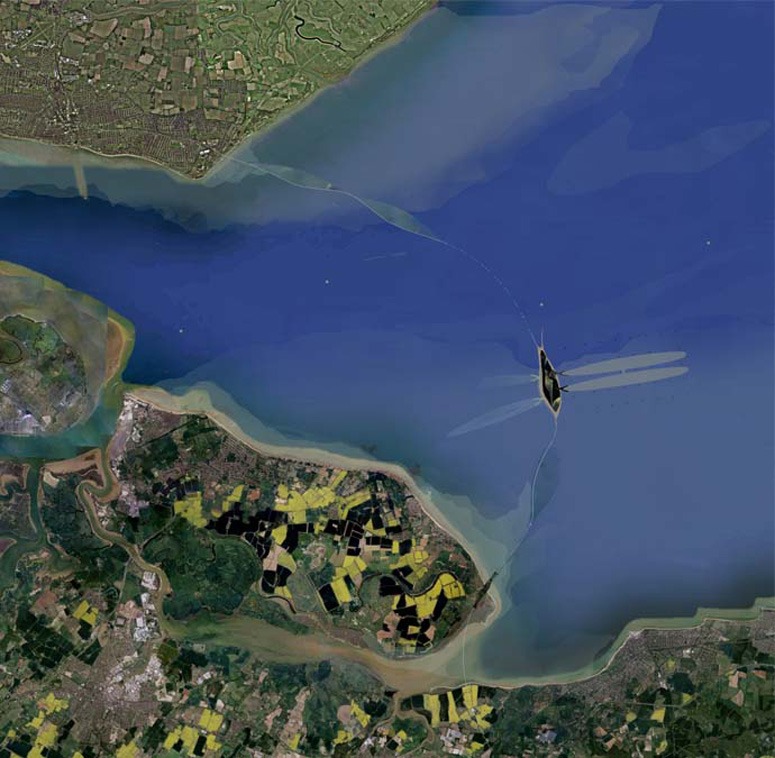
Planning cycle routes is the healthiest, fastest, cheapest, greenest and most ecological approach to greener rural and urban transport in the coming age of Peak Oil

Planning cycle routes is the healthiest, fastest, cheapest, greenest and most ecological approach to greener rural and urban transport in the coming age of Peak Oil
You can download the .pdf and comment the draft of Mayor Boris Johnson’s London Plan 2009. The most interesting chapters, for me, are Chapter 6 on Transport and Chapter 7 on London’s Living Spaces and Places. The Gardenvisit website has a historical analysis of previous Open Space Plans for London and I have a special interest in Boris’s plan because he is the only politician I have ever voted for who has been elected. Briefly, my comments on the 2009 draft of the London Plan are as follows.
1) The 2009 London Plan is qualitatively inferior to the 1943 Open Space Chapter of the Abercrombie Plan for London. The latter is obsolete in most respects but it had the great merit of taking a simple, clear and idealistic view of the problems and the opportunities. Abercrombie was a member of the Institute of Landscape Architects and had a deep understanding of the subject.
2) If the Greater London Authority is unable to afford the cost of expert landscape consultants, I modestly point them to the Green Strategy I prepared for the London Planning Advisory Committee in 1992. The Mayor’s London Plan is over halfway to adopting the principle of a series of overlapping green networks (for Rivers, Walks, Cycling, and Habitats). These layers should now be INTEGRATED on a Londonwide basis.
3) Town planners should not have responsibility for landscape and open space planning unless they also hold professional qualifications in landscape architecture. I do not know who wrote the landscape sections of the 2009 Draft but they do not read like the work of imaginative, well-educated and influential landscape planners.
Following in the footsteps of Britain’s most quoted historians (W. C. Sellar and R. J. Yeatman) we should ask: is the London Eye is a Good Thing or a Bad Thing?
On balance the London Eye is therefore a Bad Thing and Lord Rogers was wrong. He declared “The Eye has done for London what the Eiffel Tower did for Paris”. Lord Rogers is a decent architect but has little understanding or urban design and no understandisng of landscape architecture or geography. The Eiffel Tower does not dominate the historic core of Paris.
The London Eye should be moved downstream of Tower Bridge, to a site which would not be dwarfed by its scale (eg Chamber’s Wharf). It should also be hoisted by 30m (from 135 metres to 165 metres so that it is higher than the Star of Nanchang (160 m). This would be a Very Good Thing.
The UK Royal Town Planning Institute (RTPI) was launched in ill-omened year: 1914. But it was founded by idealists and played an honourable role, until another year of destiny: 1947. Effectively, it then split. One portion became an arm of government, forever beholden to the ugliness of local government in the UK. The other portion, which has grown in size, became an arm of the property development industry. The idealists left.
The above image of a ‘regeneration’ proposal in Lewisham, South London, shows the result. There is a lot of patter about sustainability etc but the design is 1930s Corbusian with a sprinkling of rancid green sauce. The developers get a fat profit; the local council gets more tax income; the people get an ugly and badly designed project: 98% of respondents to a consultation were against the proposal. If Steen Eiler Rasmussen, author of London the unique city, could give an opinion he would surely sign it ‘Disappointed, Disgusted and Revolted of Copenhagen’. He believed London unique among world cities because such a high proportion of its residents have their own gardens and do NOT live in flats. Rasmussen also loved London’s parks and would be horrified the social uselessness of the proposed ground level space in Lewisham. The design is context-insensitive to a high degree. Poor old Lewisham. Poor old London. Poor old England.
The above image shows my drawing of a sustainable city, left, and Richard Rogers design for the Chelsea Barracks, right. The upper part of Rogers’ drawing shows Ranelagh Gardens and the site of the Chelsea Flower Show. I am of course mildly flattered that Richard Rogers has copied my idea but would like to point out that (1) the decent thing in cases like this is to acknowledge one’s sources, or offer a copyright fee (2) my drawing was a caricature, intended to show what should not be done in the name of sustainability (3) Rogers omitted the two redeeming features of my scheme: the green roofs were devoted to urban food production and the cyclist-friendly nature of the design proposal.
I was therefore very relieved to hear that, after some caustic remarks by Prince Charles, the Qatari Royal family have decided not to go ahead with Rogers’ context-insensitive design. It makes ‘Plan Voisin’ mistakes without Corbusier’s flowing, if ill-conceived, parkland. Rogers’ blocks are far too close together and would have created some horribly narrow passageways.
Roger’s response to Prince Charles’ intervention has been to accuse him of constitutional impropriety. On this occasion, it is Rogers and his buddies from the architectural mafia, who have gone bonkers. It would be a sad day for democracy if the future King of England were banned from speaking his mind on the urban landscape of his capital city. What’s more, Prince Charles is very probably ‘speaking for England’ in the sense that more people hate than love Rogers’ paltry plagiarism of my idea. See Hugh Pearman’s blog for more details of this sorry affair. I am wondering if I should ask the University of Greenwich to withdraw the honorary doctorate it awarded to Richard Rogers, though he gave a good speech and was a very pleasant lunch guest.

A pilot's landing view of the Thames Estuary Airport. The sun is coming out and he can see the lido where he will relax before his next flight.
Boris Johnson has proposed a new Airport in the Thames Estuary. It is a great idea but it needs to be much more than an airport plonked in the Thames estuary if it is to get built. It should be a sublime feature in the landscape which also forms a new Thames crossing, a downstream flood barrier to protect Europe’s largest and richest city in the coming era of rising sea levels, a great lido facility and a wildlife habitat creation project. This is the proposal from Eleanor Atkinson, a MA Landscape Architecture graduate from the University of Greenwich – see her Thames Estuary Airport website for further details.
A friend’s father criticised the first proposal for an airport Maplin in the Thames Estuary: BROMHEAD, PETER The Great White Elephant of Maplin Sands – -the neglect of comprehensive transport planning in government decision-making Paul Elek, London, 1973. His case was well argued but, I believe, Eleanor’s proposal would overcome his objections. She has designed a Great White Swan instead of a tawdry white elephant. Her airport plan is comprehensive and fits very well with the Channel Tunnel Railway and the Thames Gateway Development, both launched since Bromhead’s 1973 book. Above all, her ‘ Swan Plan’ for an Estuary Airport is landscape architecture led. This gives it the best possible chance of overcoming the muddy waves of objections which greet any large development proposal in England.
The lower Thames Estuary can have a glittering splendour when the sun shines but it is NOT the most beautiful part of Britain. And when the new airport is built it will cure West London of the terrible curse of airport noise – and release a fabulously valuable development site. An intelligent approach to context-sensitive landscape design is the royal road to voter-support in England. I am pleased to report that the design has been sent to the Mayor of London’s office and they have passed the design concept to their consultants. A decision is expected.
NOTE: if you would like to see more of this proposal, and other excellent landscape architecture projects for London, they will be on Exhibition at the Menier Street Gallery near London Bridge 53 Southwark Street London SE1 1RU 10am-5pm from 22-26 June 2009.

Plan of the Thames Estuary 'Boris Johnson' Airport, showing the river crossing, flood barrier and habitat creation areas